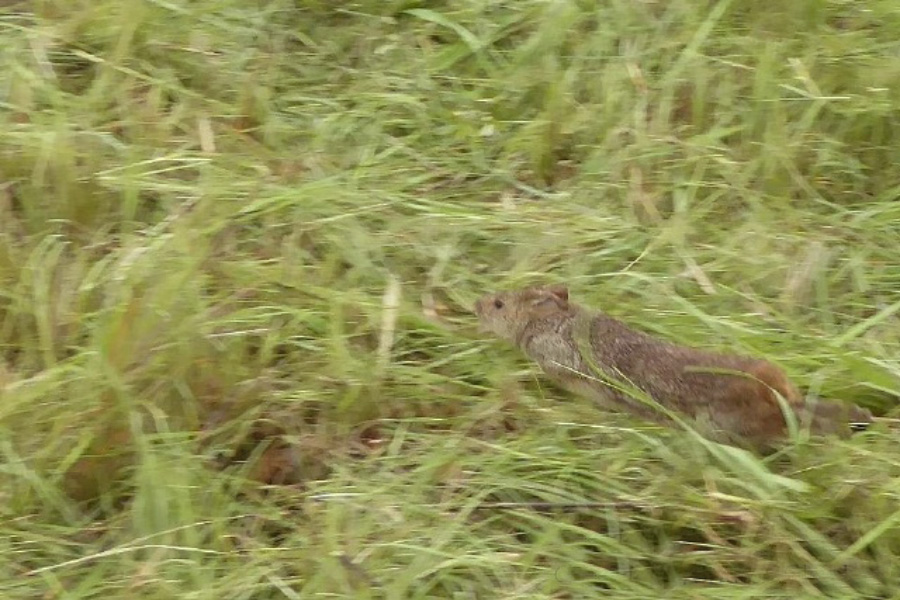 "
"
This image of the globally endangered Hispid Hare (Caprolagus hispidus) may have some conservation significance considering that this is one of the first wild images taken from northern India.
The hispid hare is a lagomorph in the Leporidae family (hares and rabbits). It is identified by its distinctively short ears and, unlike other members of the Leporidae family, short and stout hind legs barely exceeding the length of the forelegs. The animal is rarely seen due to its extremely shy and secretive nature. As such, it is rarely found outside the shelter of the tall grassland habitats in its range. Its elusive nature thus makes studying this enigmatic mammal extremely challenging. It is no surprise then that we know very little about its presence, leave alone its ecology.
The hispid hare’s range historically spanned all suitable tall grassland habitats across much of the terai in north India and southern Nepal, and the floodplain grasslands of north-eastern India and northern Bangladesh in the 100-250m elevation range. However, this species is now restricted to small isolated pockets, perhaps only in protected areas (PAs), in southern Nepal and north and northeastern India. Some of the principal threats the species faces include habitat destruction, increased isolation, succession of grasslands into woodlands, thereby reducing the extent of suitable habitat, and persecution by hunting.
These images of a hispid hare were captured in June 2016 when we were on our way to observe Bengal Floricans in a grassland patch off the Dudhwa-Chandan chowki road in Dudhwa National Park.

 CI is a non-profit, non-commercial portal that aims to facilitate wildlife and nature conservation by providing reliable information and the tools needed to campaign effectively.
CI is a non-profit, non-commercial portal that aims to facilitate wildlife and nature conservation by providing reliable information and the tools needed to campaign effectively.
Chosen as 'Picture of the Week'
Some species are so rare or secretive that they disappear from public consciousness. We hope that this picture will rekindle interest and lead to more studies of this highly endangered denizen of our grasslands.